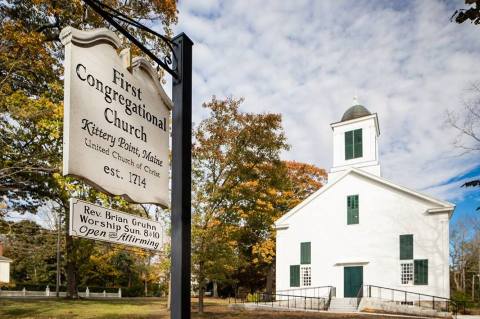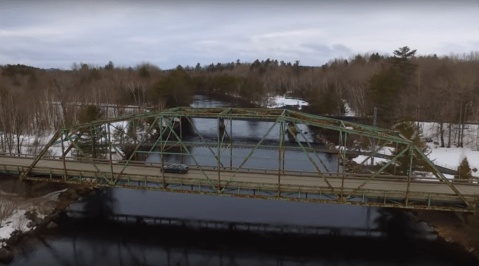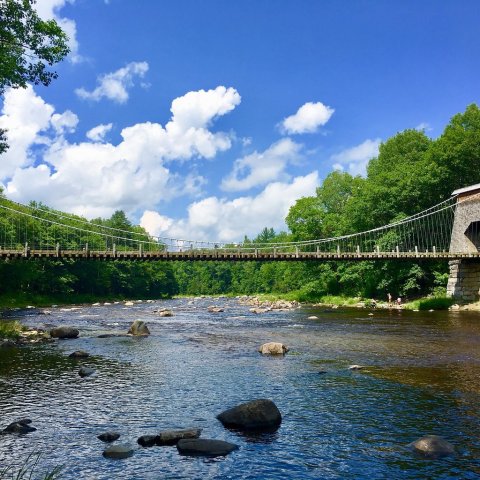The Majority Of Maine's Covered Bridges Can Be Found In This Jaw Dropping Region
Maine’s quintessential small towns are worthy of every photo, every painting, and every story we hear about them. They’re beautiful and quaint, reminding us of a simpler time when just crossing a river required ingenuity and creativity that we oftentimes don’t think about today. The period between the 1800s and 1900s saw the majority of covered bridges in Maine built in these small towns, and there’s no better place to see them than in the Lakes and Mountains region. While there were once 120 covered bridges in the state, most were destroyed by flood, fire and… modernity. Today there are nine covered bridges in Maine, and six of them can be found relatively close to each other. To find your way to each bridge, follow these directions using Google Maps.







To enjoy small-town Maine, consider taking this road trip through some of the most picturesque places in the state. And don’t forget to pack plenty of awesome road trip snacks!
OnlyInYourState may earn compensation through affiliate links in this article. As an Amazon Associate, we earn from qualifying purchases.
More to Explore
Covered Bridges In Maine
How many covered bridges does Maine have?
Maine is home to nine covered bridges standing and open to the public. These covered bridges are scattered across the state and are often located in picturesque settings, making them popular for sightseeing and photography. Some bridges are open to vehicle traffic, while others are only accessible to pedestrians.
The number of covered bridges can change over time due to factors like restoration, reconstruction, or sometimes, unfortunately, decay or natural disasters. Each of Maine's covered bridges has its own unique history and characteristics, ranging from relatively modern constructions to historic structures dating back to the 19th century.
What are Maine’s covered bridges?
Maine has a small number of covered bridges, each with its own unique charm and historical significance. Here's a list of Maine's covered bridges:
- Watson Settlement Bridge: Located in Littleton, this bridge spans the Meduxnekeag Stream and is the longest-covered bridge in Maine at approximately 170 feet.
- Hemlock Bridge: Built in 1857, this bridge is located in Fryeburg and crosses the Saco River.
- Artist's Bridge: Found in Newry, this bridge was built in 1872 and spans the Sunday River. It's a popular spot for photographers. It’s also known as Sunday River Bridge.
- Lovejoy Bridge: Located in Andover, this bridge crosses the Ellis River and is one of the shorter covered bridges in Maine.
- Babb's Bridge: Originally built in 1843, this bridge crosses the Presumpscot River in Windham. It was reconstructed after being destroyed by arson in 1973.
- Porter-Parsonsfield Bridge: This bridge connects the towns of Porter and Parsonsfield and crosses the Ossipee River.
- Robyville Bridge: Located in Corinth, this bridge crosses the Kenduskeag Stream.
- Bennett Bridge: Found in Lincoln Plantation, this bridge crosses the Magalloway River.
- Low's Bridge: This bridge crosses the Piscataquis River between Guilford and Sangerville.
Each bridge offers its own unique scenic beauty and is a testament to different styles of wooden bridge architecture. Some are still open to vehicular traffic, while others are limited to pedestrian use.
What is the longest covered bridge in Maine?
The Watson Settlement Bridge, also known as the Littleton Mills Bridge, is the longest covered bridge in Maine. The bridge in Littleton was built in 1911 and spans the Meduxnekeag Stream. The bridge is about 170 feet long and is a Town Lattice Truss design. It's one of Maine's few remaining covered bridges and is listed on the National Register of Historic Places.
The Watson Settlement Bridge is not open to vehicle traffic but is accessible to pedestrians. The bridge provides a scenic view of the surrounding area and is a popular spot for photography. Its length and historical significance make it a point of interest for locals and tourists alike.




